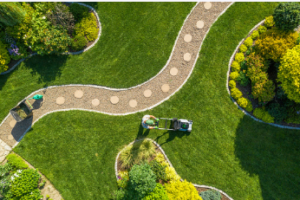Why Hire a Leading Garden Designer?
Hiring an experienced, leading garden designer Adelaide is necessary if planning a garden design project. These specialists will oversee your job from start to finish and guarantee everything runs smoothly.
 No matter your style, these designers can help make it happen.
No matter your style, these designers can help make it happen.
Garden Design
A leading garden designer Adelaide must possess an intuitive understanding of plant growth and a detailed knowledge of hard landscaping and design elements that give gardens structure and balance. This rare talent necessitates extensive training to be successful in the industry.
Success in this field necessitates having an open mind and creative spirit. A great garden designer also knows how to work within clients’ preferences and limitations.
A wide range of courses is available, from full-time and part-time to short and online courses, designed to enhance your garden design and planting abilities. Horticulture specialists run some, while others showcase renowned garden designers and landscape architects.
Garden designers are increasingly creating landscapes that don’t compromise environmental sustainability. To do this, they use local and sustainable hard landscaping materials, pollinator-friendly planting, and produce diverse habitats in their gardens – enabling them to create spaces that benefit the environment while reducing their carbon footprint.
Landscaping
A leading garden designer Adelaide might be your perfect solution if you’ve always wanted a garden that stands out but lacks the time or funds to do it yourself. They specialise in designing, building and planting gardens of any size or shape imaginable. Furthermore, they understand every step of the design process from start to finish, guiding through each stage, from consultation through completion.
Landscape architects and designers are experts at crafting stunning gardens tailored to a specific site’s requirements. They understand how your garden will perform based on soil type, drainage patterns and orientation; consequently, they can suggest suitable plants that will thrive under these conditions.
They will know where to place each plant and create the surrounding space with paving, walls and water features. Furthermore, they can advise you on the appropriate plants and trees for different seasons and how to incorporate them into your overall garden design.
These designers boast a wealth of expertise and are renowned for their distinctive styles. Their portfolio ranges from expansive private gardens to intimate courtyard spaces.
Their gardens draw inspiration from traditional English styles yet are environmentally responsible and sustainable. Typically, they incorporate water features and evergreens for year-round interest.
Their work has been featured in various magazines, and they are frequent speakers at garden shows and events. In addition, they have a background in architecture and are knowledgeable about planning laws and regulations.
Hardscaping
Hardscaping is the art of landscaping with non-living objects like paths, walls or stairs. This subcategory of landscaping can create a more valuable landscape by adding value to it.
Hardscaping is becoming an increasingly popular and lucrative category for landscaping businesses due to its numerous advantages. One significant benefit of a hardscaped yard is that it requires much less water than an entire lawn and tends to last longer than soft-scaped yards.
Planting
Planting is a crucial element of garden design. It requires artistic talent, aesthetic judgment, and extensive horticultural, ecological and cultural knowledge, and successful garden designers possess all these abilities equally.
Create a welcoming area in front of the house or plant a garden that attracts wildlife. Then consider recreational needs like comfortable seating and a place for putting a green or bocce court.
Before planting, draw a rough sketch of the area using a tape measure and graph paper. It will help you envision the finished appearance of your new garden.
Once you have a rough sketch, measure how much room each element will occupy and if there is room for any features you wish to include. It could consist of seating areas, dining tables or water features.
Another essential consideration when selecting plants for your landscape is their height. Larger perennials and shrubs can become challenging to thin out once established, so choosing them carefully is best.
As a general guideline, plant perennials bloom in four distinct periods – early spring, late spring, summer and fall. It ensures there’s always something blooming in your garden and nourishes pollinators and birds alike.